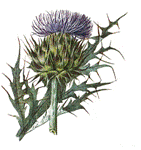Papers in the Biological Sciences

Svata M. Louda Publications
Document Type
Article
Date of this Version
1990
Abstract
Platte thistle (Cirsium canescens Nutt.) is a native monocarpic plant species of Sandhills prairie. We concurrently tested three biological interactions that could influence its recruitment and population density: (1) predispersal flower and seed consumption by insects; (2) postdispersal loss of seeds to vertebrates, and (3) seedling competition with established plants. Few previous experimental studies have analyzed more than one of these processes at a time. Each interaction had a significant negative impact on seedling establishment. Insect seed predation caused major losses that were magnified in each succeeding life history stage. A 3-fold reduction in viable seeds by insects led to a 6-fold decrease in seedling establishment and a 6- to 37-fold reduction in the eventual number of new adults. Germination was low (1.7%) and 80% of the seedlings were in exclosure cages, particularly in those cages placed in an open disturbed area instead of in the grassland. Competition between seedlings and established grasses led to a 9.5-fold decrease in seedling survival. Platte thistle populations were thus limited successively, first by seed predation and then by competition with established grasses. Both processes therefore reinforce selection for the fugitive life history observed in this species.


Comments
Published in American Midland Naturalist 124 (1990), pp. 105-113. Copyright 1990 The University of Notre Dame.